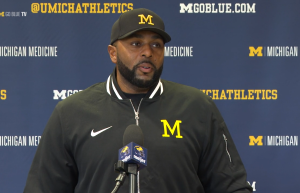
Financial advisors seldom suggest avoiding debt repayment, but this time is different.
Millions of Americans with student loan debt have been waiting for President Joe Biden to follow through on a campaign pledge to forgive at least $10,000 per borrower. While Biden just extended the loan payment moratorium until August 31, pressure on the administration is increasing as the midterm elections near.
As the White House mulls its choices, doubts abound about how debt cancellation would operate in practice: would those earning more than $60,000 per year be eligible? There's no incentive to pay right now, according to personal finance experts.
Why You Shouldn't Pay Your Student Loan Debt Right Now?
Borrowers who are anxious to get out of debt may find the wait-and-see strategy difficult. It's also worth remembering that student loan forgiveness would only apply to federal loans. Private loan payments have not been halted, however, some lenders are still offering deferral or modified payment arrangements.
According to experts, there are methods to plan for the future while still hedging your chances with student loan forgiveness. Many debtors are putting the money they would have spent on federal student loan payments toward other debts such as vehicle loans, credit card debt, and private student loans.
But suppose you've already done that and are looking at your federal student debts, some financial experts propose placing that money into a high-yield savings account instead of paying down the principle right now.
According to Diane Pearson of Pearson Financial Planning in Wexford, Pennsylvania, money set aside for debt payments may be an extra cushion for an emergency fund and help educate clients on healthy saving habits, as per Bloomberg.
Borrowers who were misled or cheated by their institution while enrolled are eligible for student loan discharges under the borrower defense to a repayment program. Applicants must submit a borrower defense claim with the Education Department, establishing that their college participated in widespread wrongdoing, to be considered.
FSA ruled that the now-defunct cosmetology school failed to offer the instruction it promised after analyzing claims for nearly 300 former Marinello students. Marinello left students without teachers for weeks or months at a time, according to the report, making it impossible for them to pass the state licensing exams required to work in their industry.
The Education Department will begin communicating with former Marinello Schools of Beauty pupils soon, with discharges likely in the coming months. Borrowers who are eligible for student debt forgiveness do not need to take any more steps.
If you don't fulfill the borrower defense program's qualifying standards, student loan refinancing may be an alternate debt payback option. Remember that refinancing federal student loans will exclude you from certain programs like income-driven repayment, COVID-19 administrative forbearance, and other federal debt reduction options.
Contact a professional loan specialist at Credible to learn more about student loan refinancing and see if this option is suited for your financial circumstances, Fox7 reported.
Read Also : COVID-19 Warning: Joe Biden Administration Projects 100 Million Cases Amid Call for Funding
Student Loan Balance Per Family
To be competitive in the employment market, an increasing number of students believe they must attend graduate school. And more school time equals more expenses and a larger demand for borrowing. Around 40% of outstanding federal student loan debt is currently taken on for master's and Ph.D. degrees after graduation.
In 2018-19, average parent student loan levels were over $35,000, up from roughly $5,000 in the early 1990s. According to the Student Borrower Protection Center, the private student loan industry has expanded by more than 70% in the previous decade. Private student loans now owe more to Americans than past-due medical debt or payday loans.
Millions of new students enter the student loan system each year, while current borrowers fight to get out. Many new college graduates cannot afford to repay their loans over 10 years.
As a result, according to US Department of School data, it takes an average of 17 years for Americans to pay off their education debt. Many borrowers put their loans on hold through forbearances, causing their debt loads to balloon with interest, while numerous failures in the government's debt forgiveness programs have left many who anticipated their debt to be wiped off after a specific length of time still carrying it,
Since the 1990s, the average debt load upon graduation has quadrupled, from $10,000 to $30,000. Around 7% of student loan debtors are already in debt for more than $100,000, according to CNBC.
@YouTube
© 2025 HNGN, All rights reserved. Do not reproduce without permission.








